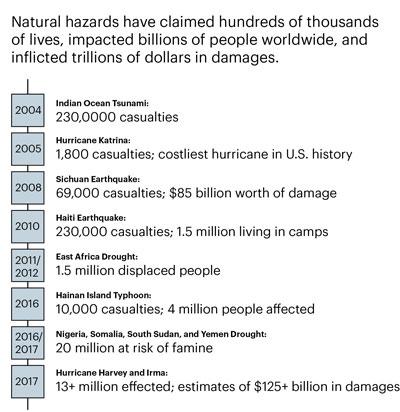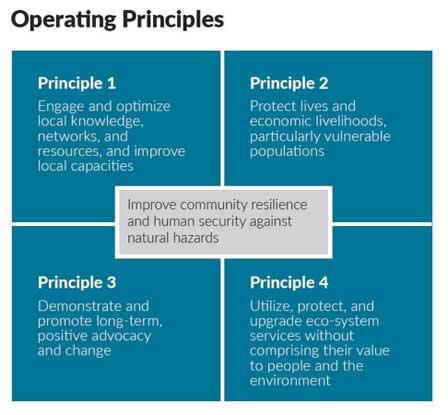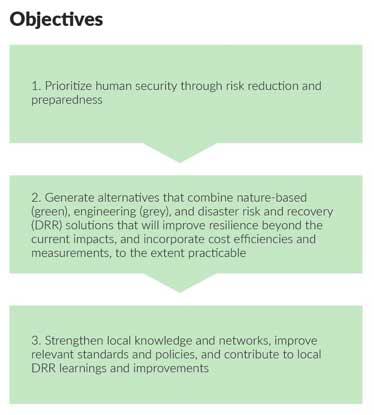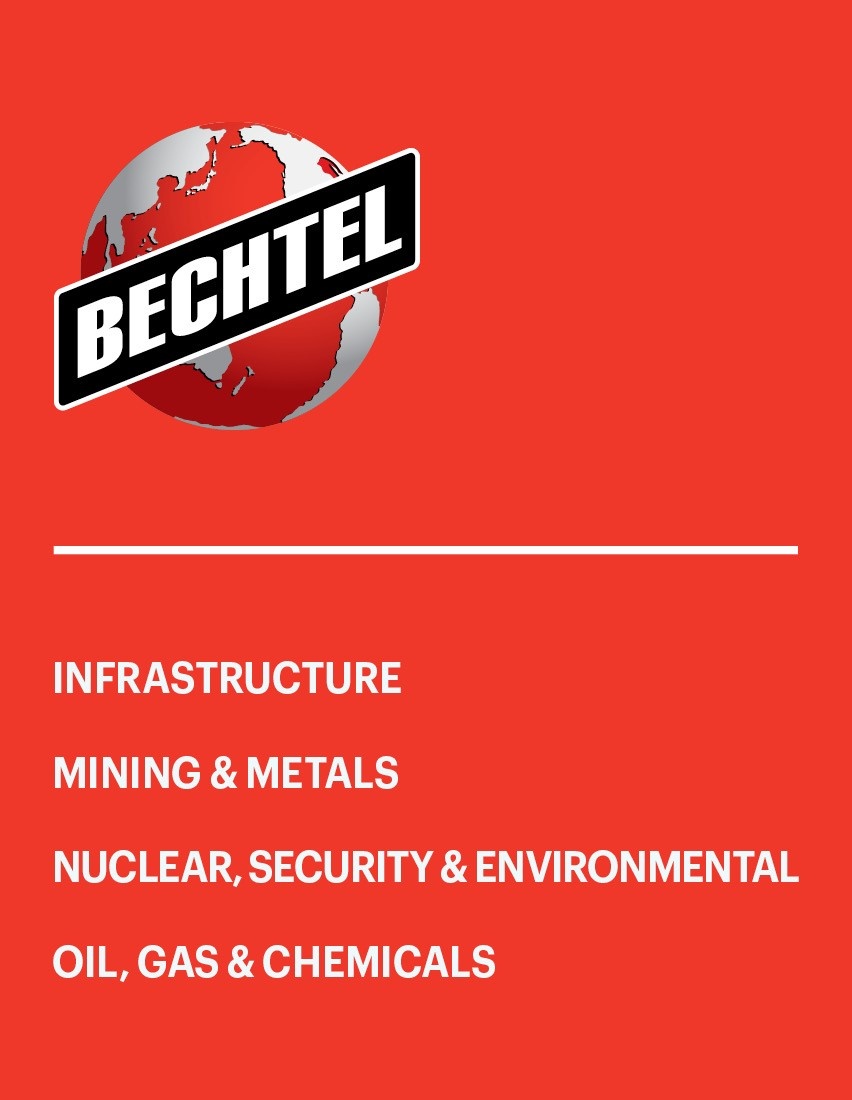Bechtel CASE STUDY: “Green-Grey” Approaches to Building Resilient Communities
by Tam Nguyen, Global Head of Sustainability; Contributors: Bruce Colvin, Kit Ng, Stew Taylor, and Peter Toth
As part of Bechtel’s commitment to contribute 100 ideas to support the United Nation’s 2030 Sustainable Development Goals (SDGs), this case study examines how we can improve the resilience and security of vulnerable communities against the impact and implications of natural hazards by delivering projects that combine nature-based (green), traditional infrastructure (grey) and disaster risk reduction (DRR) solutions.
GOAL 11: SUSTAINABLE CITIES AND COMMUNITIES
Make cities and human settlements inclusive, safe, resilient and sustainable.
11.5: By 2030, significantly reduce the number of deaths and the number of people affected and substantially decrease the direct economic losses relative to global gross domestic product caused by disasters, including water-related disasters, with a focus on protecting the poor and people in vulnerable situations.
GOAL 13: CLIMATE ACTION
Take urgent action to combat climate change and its impacts.
13.1: Strengthen resilience and adaptive capacity to climate-related hazards and natural disasters in all countries.
13.2: Integrate climate change measures into national policies, strategies and planning.
13.3: Improve education, awareness-raising and human and institutional capacity on climate change mitigation, adaptation, impact reduction and early warning.
GOAL 17: PARTNERSHIPS FOR THE GOALS
Revitalize the global partnership for sustainable development
17.16: Enhance the global partnership for sustainable development, complemented by multi-stakeholder partnerships that mobilize and share knowledge, expertise, technology and financial resources, to support the achievement of the sustainable development goals in all countries, in particular developing countries.
17.17: Encourage and promote effective public, public-private and civil society partnerships, building on the experience and resourcing strategies of partnerships.
I. Challenge
The impact of climate change on the built environment, including urban, peri-urban, rural, and coastal areas pose complex challenges on human security, economic development, and environmental protection. According to the United Nations, the frequency and intensity of natural disasters is increasing. In the past 20 years, nearly 4.4 billion people have been impacted by natural hazards, causing an estimated $1.7 trillion dollars in damage to communities and the environment worldwide. All reports indicate this trend will continue.
While there are efforts to mitigate the effects of climate change like transitioning to low carbon fuels, there is also a parallel effort to adapt to these effects by rethinking and reorienting the way we design, build, and operate the physical environment while promoting economic development in these areas.
One of the findings from our own text analytics, where we analyzed over 300,000 unique content and conversations, is that innovation was key to addressing the long-term challenge of climate adaptation and building more resilient communities.
Over the past decade, enhanced approaches to design and build that has the dual effects of resiliency and sustainability have emerged. This is particularly important for communities dependent on land, water and other eco-system services for their economic livelihood. For example, building a physical structure (e.g., dams and dykes) to reduce the effects of a storm surge, yet blocks or obstructs the ability of locals in a coastal community to access critical fishing areas may improve resilience but it may not be sustainable. A more human-centric and systems approach is evolving that engages communities, optimizes nature-based structures (e.g., mangroves and seagrass) with physical engineering solutions, and incorporates emergency preparedness. These ideas draw from a body of knowledge and practical applications, including the Dutch concepts of “building with nature”, various engineering disciplines, and disaster risk reduction programs.
II. Approach
In 2017, Bechtel organized a workshop that involved the U.S. Agency for International Development Office for Disaster Assistance, Development Alternatives, Massachusetts Institute of Technology, and Conservation International to establish a set of operating principles and objectives around how to deliver both resilient and sustainable outcomes in vulnerable communities by integrating nature-based (green), engineering (grey), and DRR solutions.
The outcome from this workshop was the Green-Grey™ approach that would be the applied to all Bechtel’s Building Resilient Communities projects. We would also use technology, science and data wherever practicable to identify at-risk locations and vulnerable communities to build their resilience before the next natural hazard occurs. This includes communities with disadvantaged groups such as women, children, and people with disabilities. And, all projects would engage governments, communities, public aid agencies, non-governmental organizations (NGOs), and businesses to strengthen local knowledge, networks, and capacities. Through this effort we hope to help communities rebuild and recover quickly, safely and more sustainably, as well as improve relevant design, building and safety standards and policies.
III. Key Learnings
The green-grey approach is being applied to nearly eleven Building Resilient Community projects across four continents involving seventeen collaborating organizations. In our first flagship project with Conservation International, we are delivering a coastal protection project in the Philippines on several pilot sites of the Municipality of Concepcion (province of Iloilo). This municipality has been weakened significantly by the impacts of Typhoon Haiyan. Bechtel’s environmental scientists and engineers, and a team of sustainability specialists from Conservation International met with several communities and assessed their vulnerabilities. Each one had its own micro-economy, educational system, unique governance, politics, and language. Several communities had little access to basic human needs like clean water and reliable electricity. A critical and complicating issue was the importance of fishing as both an economic livelihood and food security. The early engagement with the community was essential, and we are updating a conceptual design that factored in green-grey resilience (e.g., mangroves and breakwater structures) with their economic sustainability. We are headed back to the community to get their final input before we help deliver a detailed design that would inform the construction plan.
We hope this project, and others, encourages the integration of this type of solution into coastal protection policies on a regional and national scale in the Philippines.





